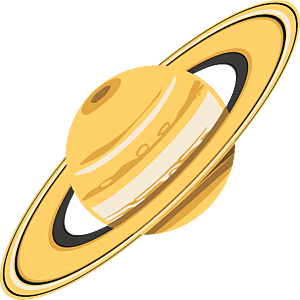The Downlink • Nov 26, 2021
Optimism, ethics and pride
Space Snapshot

This is one of the first color images of the entire Earth ever captured. NASA’s ATS-3 weather and communications satellite took the image, which shows the western hemisphere, on Nov. 10, 1967. This photo is widely considered to have inspired and motivated environmental movements around the world. Hear more about the significance of this image in this week’s Planetary Radio. Image credit: NASA.
You love space, now take action
This weekly newsletter is your toolkit to learn more about space, share information with your friends and family, and take direct action to support exploration. Anyone can subscribe at planetary.org/connect to receive it as a weekly email.
Mission Briefings


DART has officially begun its epic mission to smash an asteroid’s moon — for science. On Wednesday, Nov. 24 at 1:21 a.m. EST, NASA’s Double Asteroid Redirection Test (DART) blasted off from Vandenberg Space Force Base in Southern California. The spacecraft will reach its destination — the Didymos asteroid system — in October 2022, where it will strike an asteroid’s moonlet called Dimorphos. The mission will test whether this kind of maneuver, called kinetic impact, is a viable strategy for planetary defense. Ad astra, DART! As a side note, NASA Administrator Bill Nelson invited Bruce Willis to the DART launch due to his starring role in the 1998 film “Armageddon.” Willis reportedly did not attend. Image credit: NASA.

JWST is delayed again, hopefully for the last time. The launch date for the space observatory has been bumped from Dec. 18 to no earlier than Dec. 22. NASA says the extra time will allow for additional testing after an unexpected incident occurred in the observatory where JWST is currently being held.

Ingenuity is still kicking. Or hopping, rather. The Mars ‘copter completed its 16th flight, “traveling 116 meters (about 381 feet) northeast for 109 seconds,” according to NASA. In a tweet, the space agency said Ingenuity took color photos during the flight, but those are yet to be released.
From The Planetary Society


MIT’s Space Exploration Initiative knows that the future of space must be ethical and interdisciplinary. Ariel Ekblaw, founder and director of the Space Exploration Initiative, joins this week’s Planetary Radio for a fascinating discussion about humanity’s role and responsibilities in the exploration of the cosmos, how technological developments need to be approached thoughtfully and ethically, and how magic and mischief fit into it all. Pictured: Ekblaw on a parabolic flight with flat-packing, self-assembling, programmable tiles she is developing for use as modular structures in space. The research flight also had performance artwork and experiments, including 40 bees to study their potential for space crop pollination. Image credit: MIT.

Looking for the perfect space gift? Our holiday gift guide has everything a space geek could ask for. This year’s guide collects recommendations made by the ultimate experts on all things space: Planetary Society members and supporters like you.
What's Up

After sunset you can see Venus shining very brightly. To its upper left you can see yellowish Saturn and, farther to the upper left, bright Jupiter. In the predawn look for Mars low to the eastern horizon. Learn more at planetary.org/night-sky.
Last chance: Vote for the Best of 2021!

There’s still time to vote for your favorite exploration missions and moments in the Best of 2021 campaign. In December we’ll reveal the winners, so make sure you cast your vote now!
Take Action: Tell Congress to Pass NASA's Next Budget

The US Congress is about to make critical decisions regarding NASA’s budget. If you live in the US, you can help get NASA across the finish line! Use this form to send a message to your congressional representative in less than a minute. Your message could help make sure NASA receives an 8% boost to its budget next year. Without support, it could get stuck at current levels, undermining NASA's return to the Moon, Mars Sample Return, and the asteroid-hunting NEO Surveyor mission. Every message helps. Write to your representative today!
Wow of the Week

Planetary Society CEO Bill Nye visited the Smithsonian Institution in Washington, D.C. last week for the grand opening of its FUTURES exhibit. Our crowdfunded solar sailing mission LightSail 2 is one of the futuristic technologies on display, introduced here by Bill himself. The entire Planetary Society community can share in the pride of having created something with such lasting impact. Thank you to every single one of you who helped make this mission possible.
We love to feature space artwork in the Downlink. If you create any kind of space-related art, we invite you to send it to us by replying to any Downlink email or writing to [email protected]. Please let us know in your email if you’re a Planetary Society member!


 Explore Worlds
Explore Worlds Find Life
Find Life Defend Earth
Defend Earth


